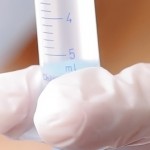 Director of the National Institute of Allergy and Infectious Diseases at the US-based National Institutes of Health Dr Anthony Fauci has said that thirteen countries receiving U.S. President’s Emergency Plan for AIDS Relief (PEPFAR) funds have reached a key “tipping point” at which the annual increase in new patients on antiretroviral treatment exceeds the annual number of new HIV infections.
Director of the National Institute of Allergy and Infectious Diseases at the US-based National Institutes of Health Dr Anthony Fauci has said that thirteen countries receiving U.S. President’s Emergency Plan for AIDS Relief (PEPFAR) funds have reached a key “tipping point” at which the annual increase in new patients on antiretroviral treatment exceeds the annual number of new HIV infections.
In his article sent by email to the Guardian on Sunday, Dr. Fauci said the curve of new HIV infections in many countries is trending downward adding that an AIDS-free generation would mean that virtually no child is born with HIV; that, as those children grow up, their risk of becoming infected is far lower than it is today; and that those who become infected can access treatment to help prevent them from developing AIDS and from passing the virus on to others.
“Mathematical models suggest that, by implementing existing HIV/Aids treatment and prevention, we can reach an AIDS-free generation. But without an effective HIV vaccine, reaching that goal will take much longer and will be more difficult, and along the way more people will become infected and more lives will be lost”, he said.
He added: “So while it may be possible, and even likely, to achieve an AIDS-free generation without it, an effective HIV vaccine would get us to an AIDS-free generation faster and, more important, help sustain that accomplishment.”
He said, while the road to an AIDS-free generation will be long and arduous, recent progress in HIV has been encouraging. Initiatives such as the U.S. President’s Emergency Plan for AIDS Relief (PEPFAR) and the Global Fund to Fight AIDS, Tuberculosis and Malaria are channeling antiretroviral treatment to millions of people in hard-hit countries.
Of the estimated 34 million people worldwide infected with HIV, more than 10 million have access to antiretroviral drugs. Treatment reduces the levels of virus in infected individuals, benefiting their health and lessening the chances that they will transmit the virus to others.
Reaching the goal depends on expanding antiretroviral treatment and proven HIV/Aids-prevention tools to all people who need them. In this regard, success or failure rests heavily on human behavior.
To attain and sustain an AIDS-free generation, those who are already infected or at risk of infection must faithfully practice recommended treatment and or prevention strategies: taking antiretroviral drugs daily as prescribed; using a condom every time they have sex; and, for those who inject drugs, always using a clean needle and syringe, he said.
In clinical trials, adherence to an intervention regimen has been shown time and again to be the make-or-break variable in whether that strategy proved effective.
Less-than-optimal adherence to a particular regimen reduces the effectiveness of most non-vaccine prevention tools. The chance of acquiring or transmitting HIV increases proportionately the less one sticks to the regimen in question.
Contrast this to an HIV vaccine. For it to be effective, a person probably would need to receive a small number of recommended immunizations, possibly just one. Beyond that, human behavior does not affect the intrinsic effectiveness.
Furthermore, unlike with polio, measles or other life-saving vaccines, which are sufficient in themselves to control the spread of the respective disease, an HIV vaccine would stand together with other HIV/Aids prevention modalities in a new model for infectious diseases. It would be one component, rather than the only component, of a prevention tool kit.
“We aspire to create a highly effective HIV vaccine. But to be useful, an HIV vaccine need only hit that sweet spot perhaps 50 percent to 70 percent effective that, when combined with other prevention tools, provides a highly effective prevention strategy” he said.
He adds: research continues to yield clues to how we might rationally design an effective HIV vaccine, yet many scientific challenges remain.
When we do succeed, an HIV vaccine will be the main driver to not only accelerate the decline of new HIV infections and to do so more efficiently and cost-effectively but also to maintain an AIDS-free generation once we get there.
While an HIV vaccine will be integral to achieving an AIDS-free generation, it also will be essential to realizing ultimate goal: a world permanently without HIV/Aids.
Source: IPPmedia.com

















